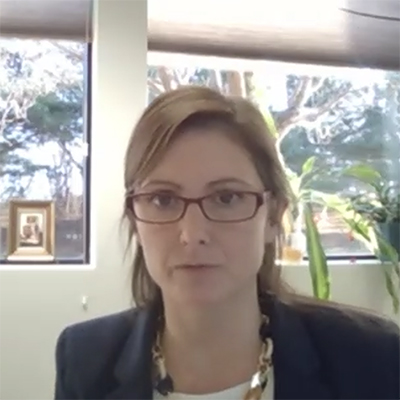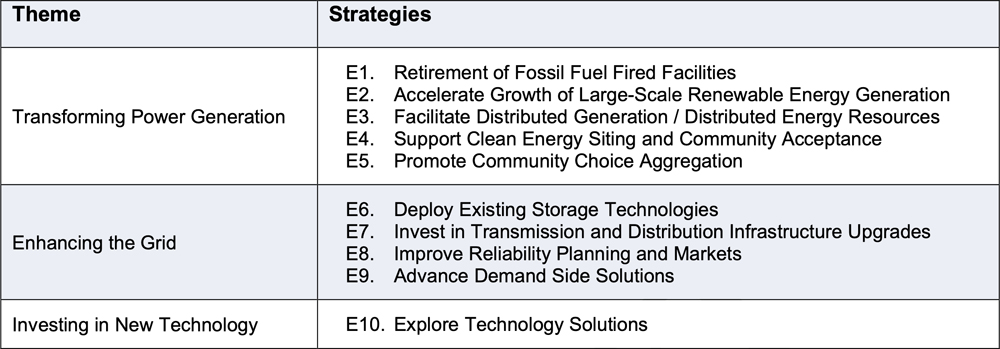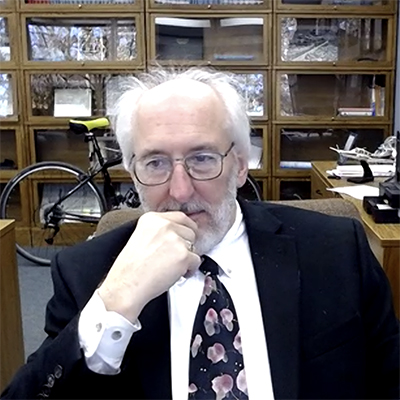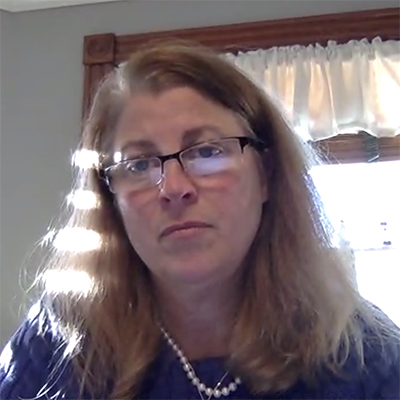New York officials on Monday unanimously approved a draft scoping plan that lays out the steps needed to achieve the emission limits set by the Climate Leadership and Community Protection Act (CLCPA).
 Sarah Osgood, NYCAC | NYDPS
Sarah Osgood, NYCAC | NYDPSThe law requires New York, through its Climate Action Council, to reduce economywide greenhouse gas emissions 40% by 2030 and no less than 85% by midcentury from 1990 levels.
The plan needs to include a detailed, credible analysis of cost impacts for all customer sectors across the state, Donna L. DeCarolis, president of the National Fuel Gas Distribution Corporation, told the council.
“It’s particularly concerning given the upfront cost to consumers that the council’s consultant has presented to us of between $20,000 to $50,000 to convert an average upstate single-family home to electric heat pump, along with the energy efficiency upgrades that would be needed,” DeCarolis said.
 NYPSC Chair Rory Christian | NYDPS
NYPSC Chair Rory Christian | NYDPSAs the state’s CLCPA requires, the council in March will begin holding regional public hearings on the draft plan, with three located in the upstate region and three located downstate, all in person, with at least one virtual hearing added for good measure, said CAC Director Sarah Osgood.
The public will have 120 days to submit comments on the draft plan, and the council will incorporate the feedback before issuing a final plan by Jan. 1, 2023.
“Ultimately, I think the more time we have for public comment the better the final report will be, capturing the needs of New Yorkers and ensuring that the energy transition we’re embarking on emphasizes reliability, affordability, safety and environmental considerations,” said Public Service Commission Chair Rory Christian.
Key Recommendations
The draft plan provides strategies for transportation, buildings, electricity, industry, agriculture and forestry, and waste, along with cross-sector strategies. Among the many recommendations for each sector are a combination of carbon pricing and zero-emission policies.
In the transportation sector, the draft plan said the state should enact a Clean Fuel Standard that requires fossil fuel providers to reduce carbon in their products through blending or acquiring credits.
The plan also suggests that the council seek public input on options for pricing GHG emissions potentially economywide for inclusion in the final scoping plan. Three options are outlined for public comment, including a fee that establishes a carbon price, a program to cap emissions across the economy or in certain sectors, and a clean energy supply standard.

For the building sector, the plan said that regulators should phase in zero-emission standards through 2035 that prohibit new gas services in existing buildings and prohibits the replacement of gas- and oil-based equipment for heating and cooling and hot water.
Additional major recommendations in the draft plan include:
- installing heat pumps in 85% of homes by 2050;
- updating the state’s energy storage roadmap deployment goals and increasing funding for energy storage deployment;
- considering creation of a market for retail and wholesale storage through Clean Dispatch Credits;
- establishing Renewable Energy Zones and initiating transmission planning for those zones; and
- enacting a Forest Carbon Bank to finance GHG emission reduction and carbon sequestration projects by farms and forest landowners.
Focus on Benefits
The scoping plan includes a definition of “disadvantaged communities” (DACs) prepared by the Climate Justice Working Group based on environmental burden, public health risks, and population characteristics, with tribal lands included by default.
 Raya Salter, NY Renews | NYDPS
Raya Salter, NY Renews | NYDPSThe plan’s basic framework is essentially how to start, what to count and what to track towards the benefits goal, said Chriss Coll, NYSERDA director of low-income programs.
With the draft plan, New York is schooling the federal government, said Raya Salter, lead policy organizer for NY Renews.
“I hope that they are watching this, that they’re going to take all this information and be really excited about it,” Salter said. “We know we must act on climate; we know state action is more important than ever. We know that the benefits of climate action outweigh the costs for health, for the economy, for women and children and families.”
The CLCPA requires that at least 35% of the benefits, and ideally 40%, go to disadvantaged communities, a point that Gavin Donohue, president and CEO of the Independent Power Producers of New York, wanted to make clear in the plan’s language.
Nonetheless, Donohue said he was “incredibly disappointed” about the lack of discussion about zero-emission technologies in the plan, citing studies presented to the council by E3, the ISO and New York City talking about the need for dispatchable resources.
 Paul Shepson, Stony Brook University | NYDPS
Paul Shepson, Stony Brook University | NYDPS“We have Gov. Hochul giving state money to Plug Power to build in New York; we’ve got NYSERDA doing a demonstration project. And we fail to acknowledge the importance of dispatchability and how we’re going to keep the lights on, and I think that is a major shortcoming of this report,” Donohue said.
The plan needs a deeper focus on creating clean energy manufacturing jobs that align with the CLCPA goals, said Dennis Elsenbeck, president of lithium-ion storage developer Viridi Parente.
“This could provide an extremely sustainable economic impact on our DACs, and in that regard, I think we need a better understanding of what is intended by benefits within the CLCPA,” Elsenbeck said. (See NY Predicts 200K+ New Clean Energy Jobs by 2030.)
Peter Iwanowicz, executive director of Environmental Advocates NY, said that carbon pricing isn’t primarily an emissions-reduction strategy, but “a pathway forward to pay for the transition” to clean energy.
 Anne Reynolds, ACE-NY | NYDPS
Anne Reynolds, ACE-NY | NYDPSHowever, another council member said that focusing too much on cost is misleading when the balance favors the benefits.
To focus on costs is “biased and is a discredit to the very thorough and impressive cost/benefit analysis that was done by this team and would, in fact, rob people of New York state of the knowledge that as we enact the Climate Act there will be a substantial net benefit,” said Paul Shepson, Dean of the School of Marine and Atmospheric Sciences at Stony Brook University.
Although the plan presents most policies as options, more than 90% of the emissions reductions are coming from measures that are not optional, such as building electrification, said Anne Reynolds, director of the Alliance for Clean Energy New York (ACE-NY).
“It’s important to continue to talk about policy differences for that final percentage of emissions … but to continually remind ourselves that most of what we need to do for the next 19 years we agree on, and so we need to move forward,” Reynolds said.


